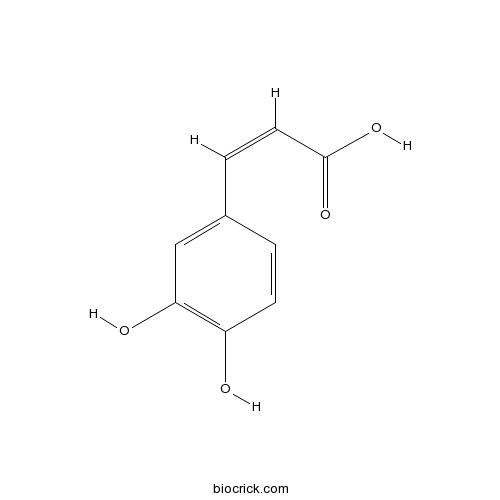Sibiraea angustata
Sibiraea angustata
1. The products in our compound library are selected from thousands of unique natural products; 2. It has the characteristics of diverse structure, diverse sources and wide coverage of activities; 3. Provide information on the activity of products from major journals, patents and research reports around the world, providing theoretical direction and research basis for further research and screening; 4. Free combination according to the type, source, target and disease of natural product; 5. The compound powder is placed in a covered tube and then discharged into a 10 x 10 cryostat; 6. Transport in ice pack or dry ice pack. Please store it at -20 °C as soon as possible after receiving the product, and use it as soon as possible after opening.
Natural products/compounds from Sibiraea angustata
- Cat.No. Product Name CAS Number COA
-
BCN5979
Caffeic acid331-39-5
Instructions

-
BCX1035
Isoferulic Acid537-73-5
Instructions

Plants regulate the effects of experimental warming on the soil microbial community in an alpine scrub ecosystem.[Pubmed: 29668711]
Information on how soil microbial communities respond to warming is still scarce for alpine scrub ecosystems. We conducted a field experiment with two plant treatments (plant removal or undisturbed) subjected to warmed or unwarmed conditions to examine the effects of warming and plant removal on soil microbial community structures during the growing season in a Sibiraea angustata scrubland of the eastern Qinghai-Tibetan Plateau. The results indicate that experimental warming significantly influenced soil microbial biomass carbon (MBC) and microbial biomass nitrogen (MBN), but the warming effects were dependent on the plant treatments and sampling seasons. In the plant-removal plots, warming did not affect most of the microbial variables, while in the undisturbed plots, warming significantly increased the abundances of actinomycete and Gram-positive bacterial groups during the mid-growing season (July), but it did not affect the fungi groups. Plant removal significantly reduced fungal abundance throughout the growing season and significantly altered the soil microbial community structure in July. The interaction between warming and plant removal significantly influenced the soil MBC and MBN and the abundances of total microbes, bacteria and actinomycete throughout the growing season. Experimental warming significantly reduced the abundance of rare taxa, while the interaction between warming and plant removal tended to have strong effects on the abundant taxa. These findings suggest that the responses of soil microbial communities to warming are regulated by plant communities. These results provide new insights into how soil microbial community structure responds to climatic warming in alpine scrub ecosystems.
Three new monoterpene glucosides from Sibiraea angustata.[Pubmed: 27348708]
Three new monoterpene glycosides, named sibiraglycoside I(1), J(2) and K(3), were isolated from an aqueous extract of the aerial portion of Sibiraea angustata. Their structures were elucidated on the basis of extensive spectroscopic data analysis (including 1D and 2D NMR and MS experiments) and compared to literature data.
[Chemical constituents from the aerial part of Sibiraea angustata].[Pubmed: 25090704]
To study the chemical constituents from the aerial part of Sibiraea angustata.
[Effects of snow cover on the decomposition and nutrient dynamics of Sibiraea angustata leaf litter in western Sichuan plateau, Southwest China].[Pubmed: 22919831]
Soil-borne bag method was adopted to study the decomposition and nutrient dynamics of Sibiraea angustata leaf litter under different depths (0, 30 and 100 cm) of snow cover in western Sichuan plateau in January-May, 2010. In snow-free plot, the mass loss rate of the litter over the five months was 29.9%; in the plots with 30 and 100 cm snow cover, the litter mass loss rate was 33.8% and 35.2%, respectively. During the decomposition, definite N enrichment in the litter was observed, while the P enrichment fluctuated. The C content and C/N ratio of the litter decreased sharply at the early stage of decomposition, but increased gradually after then. Snow cover greatly contributed to the rapid decomposition of litter and the N enrichment in the litter, but had little effects on the litter C and P contents. In western Sichuan plateau, durable snow cover with a depth of > 30 cm could alter the litter decomposition pattern, and substantially affect the soil nutrient turnover and plant community composition.
Sibiralactone: a new monoterpene from Sibiraea angustata.[Pubmed: 22312708]
Sibiralactone (1), a new monoterpene derivative, was isolated from the leaves of Sibiraea angustata. The structure was determined by the analysis of its NMR data and the absolute configuration was established by TDDFT ECD calculation of the solution conformers.
[Effects and mechanism of Sibiraea angustata on lipid metabolism in hight-fatted rats].[Pubmed: 22017008]
To investigate the effect and mechanism of Sibiraea angustata on lipid metabolism in hight-fatted SD rats.


